
Sensory Plastids: a Novel Form of Specialized Plastid
Plant Physiology, Plant Physiology: On The InsidePlastids differentiate into subtypes. For example, the transition of proplastids to chloroplasts defines the photosynthetic tissues within a plant, whereas amyloplasts are formed in nonphotosynthetic tissues. Recently, evidence has accumulated for a novel class of plastids that is specialized for stress…

Nectary Specification in Petunia and Arabidopsis
The Plant Cell, The Plant Cell: In BriefStudies of flower development have lots of information about petals, carpels, and stamens, but let’s not forget the birds and the bees—and the flies and moths—and what draws pollinators to insect-pollinated flowers, including flower color, shape, and rewards that provide energy. For example, to…

Identification of Woodland Strawberry Gene Coexpression Networks
Plant Physiology, Plant Physiology: News and ViewsWhat we think of as a strawberry is botanically not a berry or even a fruit, but rather multiple fruits (achenes that contain the seeds) on the outside of a swollen receptacle. This technicality aside, strawberries are both economically important and a useful system in which to study seed-fruit communication.…
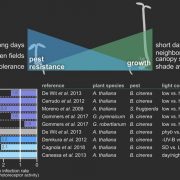
The Healing Power of Light
Blog, Plant Physiology, Plant Physiology: News and ViewsLight is life, especially for plants. It fuels photosynthesis and, when perceived by photoreceptors, directs important developmental programs, including photomorphogenesis and shade avoidance. Red and blue light wavelengths activate phytochrome (phy) and cryptochrome (cry) photoreceptors, respectively,…

An Improved Tool for Mapping the Membrane-Associated Protein Interactome
Blog, Plant Physiology, Plant Physiology: News and ViewsProtein-protein interactions mediate fundamental biological processes. Yeast two-hybrid assays can be used to detect protein-protein interactions in a fast and large-scale manner. However, in traditional yeast-two hybrid assays, the prey and bait proteins must be located in the nucleus to activate reporter…
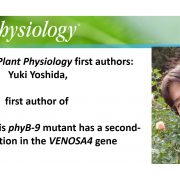
Recognizing Plant Physiology first authors: Yuki Yoshida
Blog, Plant Physiology, Plant Physiology: Author ProfilesYuki Yoshida, first author of The Arabidopsis phyB-9 mutant has a second-site mutation in the VENOSA4 gene that alters chloroplast size, photosynthetic traits, and leaf growth
Current Position: Postdoctoral researcher in Graduate School of Science at The University of Tokyo.
Education: PhD and…
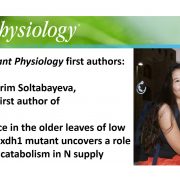
Recognizing Plant Physiology first authors: Aigerim Soltabayeva
Plant Physiology, Plant Physiology: Author ProfilesAigerim Soltabayeva, first author of Early senescence in the older leaves of low nitrate grown Atxdh1 mutant uncovers a role for purine catabolism in N supply
Current Position: Postdoctoral Researcher at the Biology Department in the School of Science and Technology at Nazarbayev University, Kazakhstan
Education:…
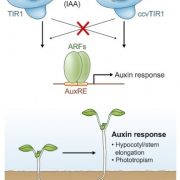
Review: Harnessing synthetic chemistry to probe and hijack auxin signaling (New Phytol)
Plant Science Research WeeklyAuxin has been studied since Charles Darwin observed the phototropic response. More recently, chemical genetic approaches using auxin agonists and antagonists have been applied to studies of auxin. Torii et al. review how synthetic chemistry and chemical genetics have provided insights into and new tools…
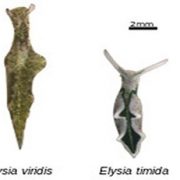
Survival of the kleptoplasts (Front. Ecol. Evol.)
Plant Science Research WeeklyHow chloroplasts remain viable inside of herbivorous sea slugs is a long-standing curiosity. Unlike corals, which host intact photosynthetic algae, sea slugs retain naked chloroplasts (which are then called kleptoplasts – stolen plastids), some of which remain viable for seveal weeks. Christa et al.…

